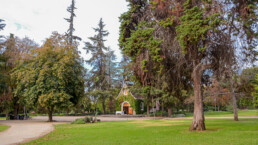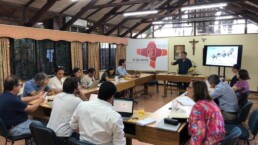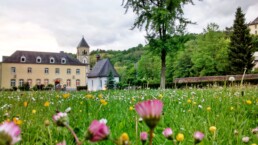It took me about twenty years before I could understand the significance of an experience I had as a child and realize how consistent it was with the May 1949 event that took place in that Shrine at the foot of the Andes. I was seven years old and used to go with my mother and brothers to a place called Bellavista. The two oldest belonged to the first groups rooted to that place.
It was 1954. I was always ‘inquisitive’. I wondered why they called it Bellavista if all I could see was a very small church in a large meadow with fledgling trees? I soon learned that the train station that arrived there had that name, as well as the bakery, the pharmacy, and other places. It really was not a pretty place, there was no grass growing, but I saw happy people, many young people singing loudly and others being very affectionate with these children. I saw how it was transformed into ‘a beautiful place’.
The things I observed…
Often, very early in the morning, a car would stop at the door of my house, full of boys who were going to pick up Joaquin, my 18-year-old brother, to go to Bellavista for Mass at 6:30 am. I remember Hernán Alessandri’s enthusiasm, a close friend of my brother Joaquín.
Something penetrated the pores of my skin. What? The enthusiasm of the young people who sang. Women -still schoolgirls- chatting in the courtyard. I observed some Sisters in elegant habits who spoke in ‘weird’ Spanish and who gave us religious cards.
Now I reflect and come to the conclusion that I believed in something they believed in. Something was contagious, something that could not be grasped, a pure and simple faith that this place belonged to the Blessed Mother and that it was good to go there many times.
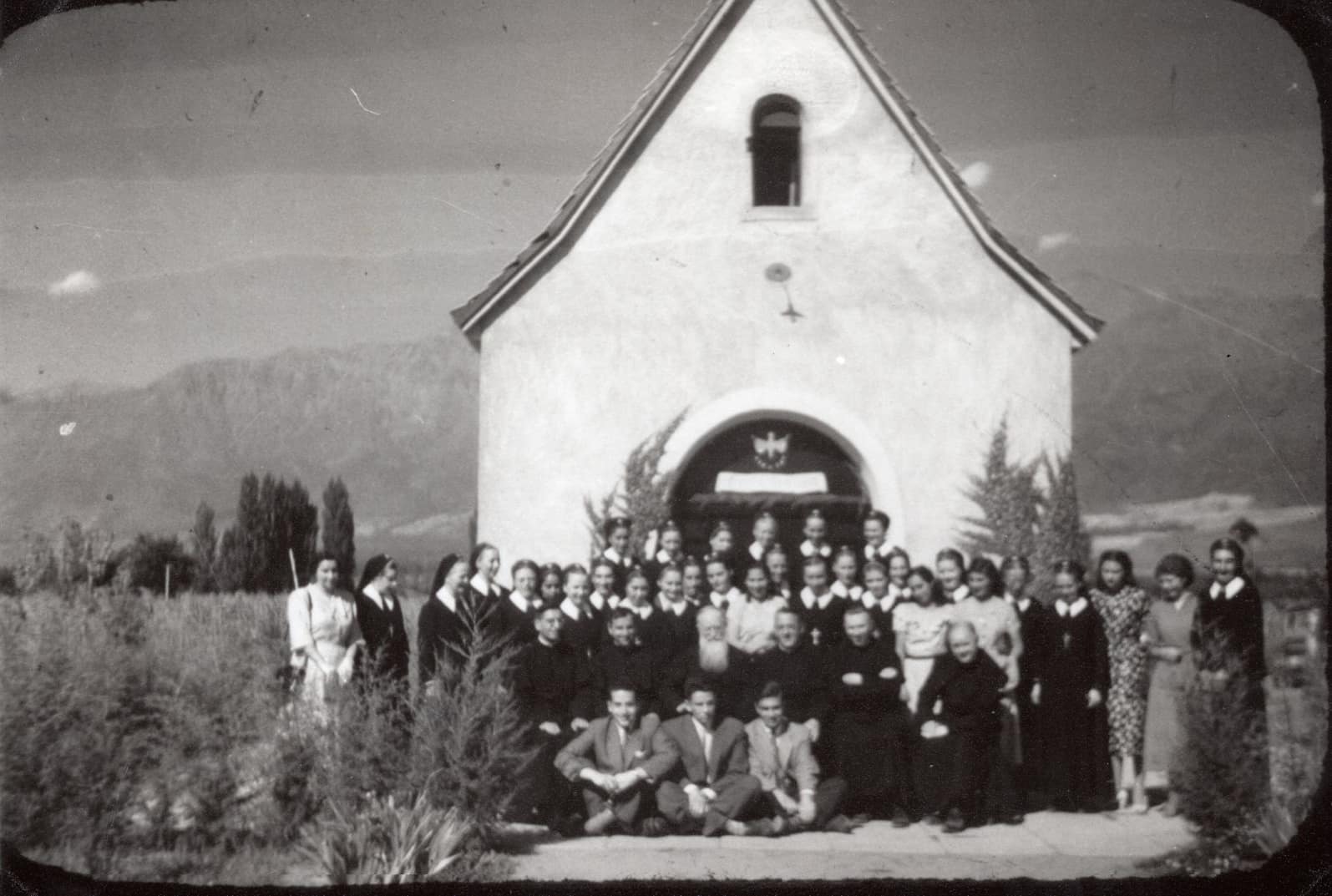
The experience of going to Bellavista
I liked the place, the shape of the chapel and that Virgin. The little chapel was small and easy to walk around. It was a place where the three younger siblings would go with my mother. My mother would go to pray. That struck me: that’s where you pray! She would linger for a long time in the Shrine while we played under a willow tree that bathed its branches in an irrigation ditch. Something happened in me within that combination of factors: my mother there on her knees, that picture with the Child, that place to play without fear.
Soon the beauty began to dress that terrain before the mountains and it became a ‘Bella-vista’, a good variation of the word ‘Schoenstatt’, ‘beautiful place’.
I liked going there very much, it was an adventure that meant going out of Santiago, on a train that went up to the mountain range. Our destination was the Bellavista station, in a large field, sparsely inhabited, without vehicular traffic, with horses and cows in the paddocks. It was a trip called ‘going to Bellavista’.
I was experiencing something new
I should add that on October 24, 1954, we consecrated our house to the Blessed Mother; we placed an octagonal picture of the Blessed Mother in a room the same size as the one in the Shrine and we raised capital of grace asking for her to come.
My mother said that on that day, the Blessed Mother from the little chapel had come to live among us. Then there was a vital connection: that little chapel, my house… that Virgin and my widowed mother who took care of 9 children… The mother-child figure… a child in the arms of a woman! was so natural, it was a permanent human experience.
I grew up under the gaze of the Blessed Mother. My faith always had a reference to a place, to an image of the Blessed Mother and to people I knew and loved. It was a long time before I learned that I was experiencing Schoenstatt, something new within the Church.
This is a story of a personal experience, but with traces of universal experiences as an itinerary of faith starting from a place and an image of grace. This, occurring to a particular individual, is part of something truly human and shared, which is the openness to that which is transcendent, and which permeates the way of living, thinking and loving. It is integrated with what can be said of the essence of a pilgrimage to a place of grace.
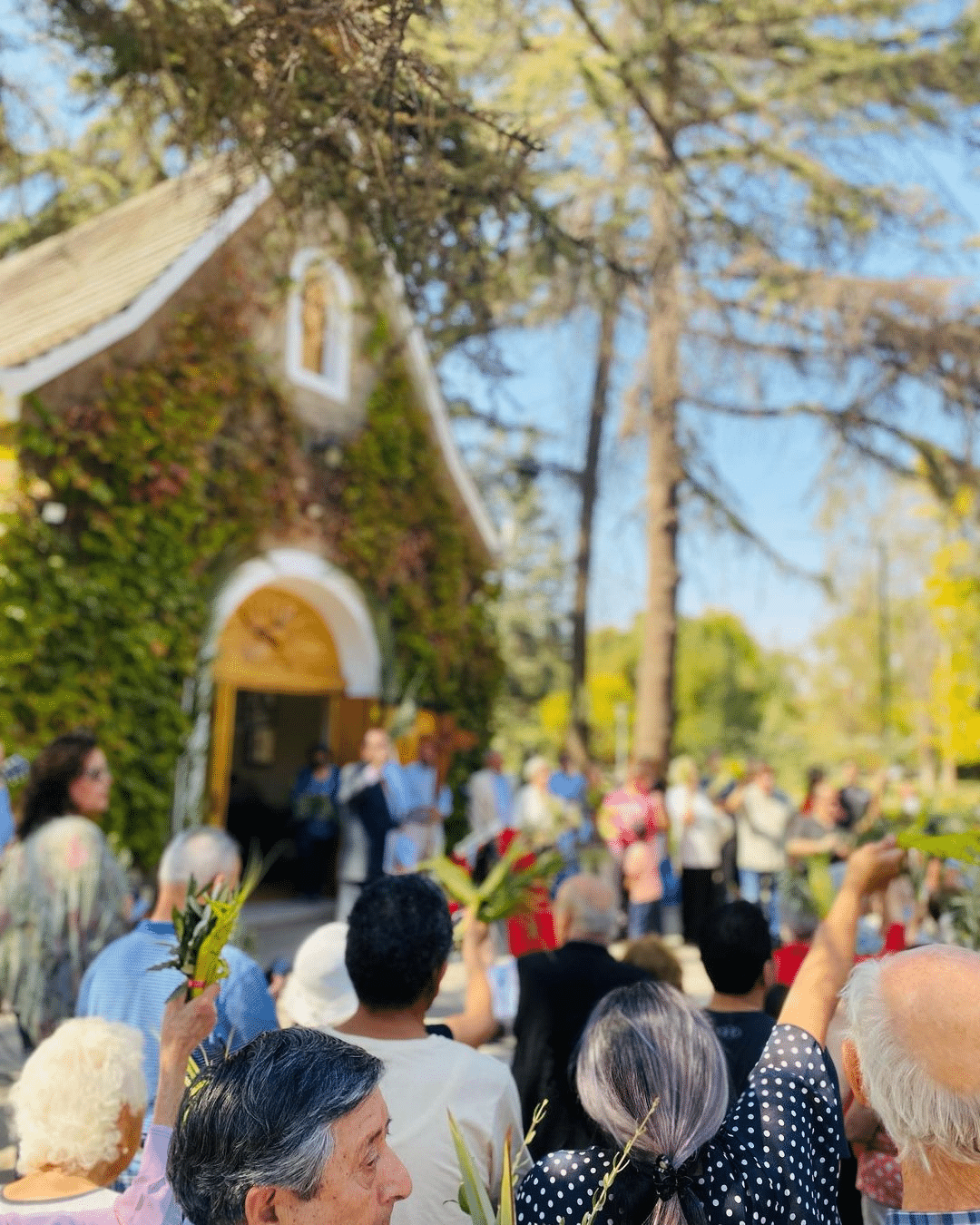
The profile of a pilgrim
This is what the 31st of May is all about: a sacred place… a meeting place that comes from God and goes back to God in a mysterious network that embraces the whole of human reality in dialogue with a higher and closer reality, subject to the immediacy of people and places. There are no separate chambers between the divine and the human. The channels intersect and unite, they scatter without losing course.
Behind that eagerness to cross the capital to the country’s outskirts was the pilgrim who leaves home, who knows where he is going and which train to take. He knows who is at the arrival point. That journey by train and without luggage was a pilgrimage as it is in all the Marian Shrines although with different profiles.
The pilgrim to a Schoenstatt Shrine does not examine whether an apparition or a miracle occurred there because he soon finds out and participates in the human collaboration, with the capital of grace. What the first sodalists believed is multiplied.
The one who goes to the Shrine is a pilgrim, he is not a wanderer who walks without direction and without knowing where he comes from or where he is going, without a compass. Whoever goes on pilgrimage to Schoenstatt is an ally in a network of personal attachments, of ideas and places.
All the facts are intertwined in our history
It is dangerous to get caught up in the milestone of May 31st within a conceptual framework. We must look at the context of the milestone. It should not be separated from the first moment, October 18, 1914. There is an evident bridge between Father’s experience in Dachau as an international Schoenstatt that leaves Vallendar and crosses over to Africa and America.
Father was a discerner of God’s plan. He observed the processes, he observed what God had written in the consistent lines of an itinerary. He did not plan the expansion through daughter Shrines at a desk. The original initiative was taken by the Sisters of the Nazareth Province established in Nueva Helvetia, Uruguay, in 1943.
The underlying network of graces was a faithful confirmation and when he was convinced that it was God’s plan, he said ‘from here the flow of graces must return to Original Schoenstatt where they were received’. He spoke of a ‘current’ that comes and goes. The word ‘counter-current’ is misleading. It is not ‘against’, it is creative and reproductive, it is reciprocity.
The network of personal ties is not understood without a location where the event takes place. The network of filial Shrines is a distinctiveness of May 31st.
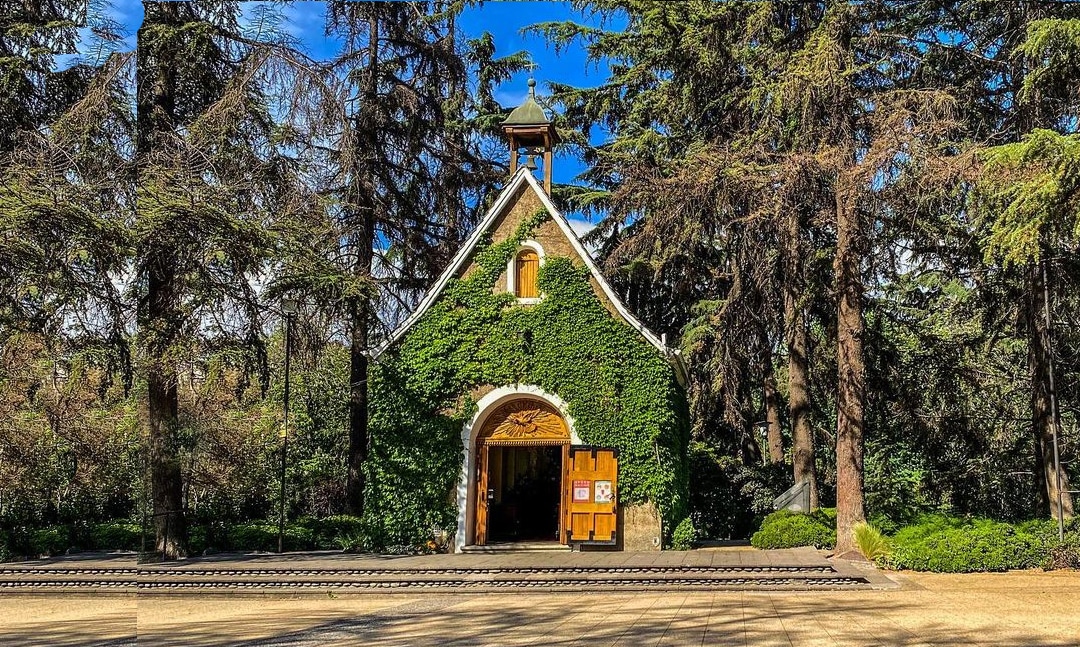
And why this milestone in Bellavista?
The events were confirming God’s intention. The contact with the people of Latin America allowed the Founder to confirm that in America he was treading on suitable terrain. He was struck by the position that the Blessed Mother occupied in Latin America. The attachment of the Pallottines to Schoenstatt was essential to read God’s plans.
Why is the landmark on the map in the Bellavista Cenacle?
He explains it extensively on various occasions and assumes that the protagonism of the Holy Spirit is decisive. His action marks a ‘Schoenstatt on the move’, a Schoenstatt ‘in crusade mode’… Yet it is a Spirit in communion with the Son and the Father in heaven. A Spirit that replicates the first Cenacle where they were ‘one heart and one soul, together with Mary’.
The material illustrating the process and its certainty is abundant
Even before he began his travels in 1947 Father Kentenich dared to tell Pope Pius XII that he could count on Schoenstatt for the life of a Church that would forge culture. A bold statement, a bold step. Thus, just after the threshold of January 20, he took the step to put Schoenstatt in front of the Church. Only a year had passed since the end of his captivity in Dachau!
This has to do with the uniqueness of our Cenacle Shrine. It names Mary as Educator of peoples, Educator from a workshop on solid ground. From there a different way of venerating the Virgin Mary must emerge. A way that is unleashed with the Covenant of Love and that takes root in a place as well as in a network of places! where the pilgrim feels ‘at home’ and decides to set up a tent.
The dynamics of a Covenant that generates changes in the individual, the grace of transformation, is unleashed. A Covenant that does not remain confined to a personal, intimate, secret experience, but rather leads to growth, to a network of shrines of the heart, of workplaces, of the home….
May 31st is a ‘network’. That is organic thinking, loving, and living. It is to be interwoven with the strings of the web. In fact, each child of the Covenant is a rope of the net thrown into the sea to catch fish. May 31st is an experience of life and a sending forth.
Related posts
April 22, 2024
May 31st Jubilee: What is the progress on the preparations?
Interview with Fr. Gonzalo Illanes Fuertes, national director of the Schoenstatt Movement in Chile: Registrations have already entered the…
April 18, 2024
Covenant of Love Day: Becoming Prophetic, Like Mary
Dear Schoenstatt Family all over the world, Greetings on the celebration of the Covenant of Love Day. We remember with gratitude and joy…
March 22, 2024
Illuminating the way to the 31st of May
On March 19, St. Joseph's Day, Father Kentenich's Secretariat in Ecuador organized an online talk entitled: Let us illuminate the way…

